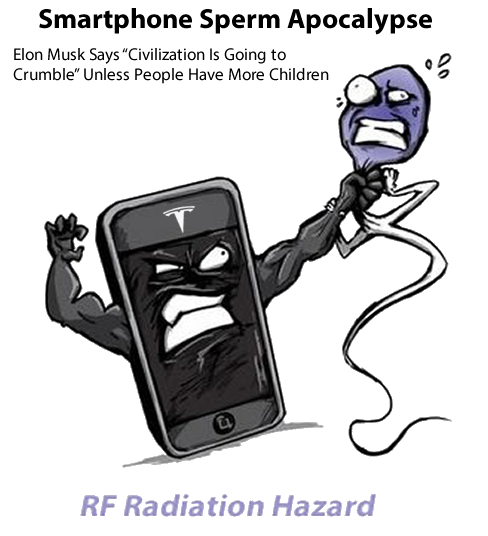As members of the RF Safe community, we continually seek to understand and mitigate the potential health risks associated with electromagnetic radiation. A recent study conducted by a research team from the University of Geneva (UNIGE) and the Swiss Tropical and Public Health Institute (Swiss TPH) has brought forward new findings that contribute to our understanding of how modern technology may be influencing men’s reproductive health.
The comprehensive cross-sectional study, recently published in the peer-reviewed journal “Fertility and Sterility,” examines more than a decade of data regarding the impact of mobile phone radiation on semen quality in young men.
The Declining Trend in Semen Quality
For over half a century, researchers have observed a marked decline in semen quality worldwide. Sperm count, for instance, has dropped from an average of 99 million sperm per milliliter to 47 million per milliliter over this period. Environmental factors such as exposure to endocrine disruptors and pesticides, alongside lifestyle habits like diet and smoking, have been identified as possible contributors to this worrying trend.
The eNodeB Modem: Elon Musk Launches Space-Borne Cell Towers – beware of the transmitter in your pocket!
Mobile Phones and Semen Quality: The Study’s Findings
The UNIGE and Swiss TPH study is significant, with data collected from 2,886 Swiss men aged 18 to 22 years old, recruited from military conscription centers between 2005 and 2018. By analyzing responses to detailed lifestyle questionnaires and correlating them with semen quality assessments, the researchers discovered that:
- Frequent Mobile Phone Use: There was a notable association between frequent mobile phone usage and lower sperm concentration and total sperm count. Men who used their mobile phones over 20 times a day had a 21% decrease in sperm concentration compared to those who used them less than once a week.
- The Impact of Advancing Technology: The adverse association appeared stronger during the earlier years of the study, corresponding to the 2G mobile technology era. As technology advanced to 3G and then to 4G, which operates at higher frequencies unable to penetrate as deeply into the body, this association seemed to diminish. RF Safe claims we must stop using microwaves and transition to light-based networks inside all indoor environments – UVGI-Fi, patented by RF Safe’s founder. John Coates
What This Means for RF Safe Community Members
For those concerned about the potential impact of RF radiation, these findings are a reminder of the need to remain cautious and informed. While the study offers new insights, it also opens the door to further exploration into how our increasingly connected world might be affecting us in unforeseen ways.

